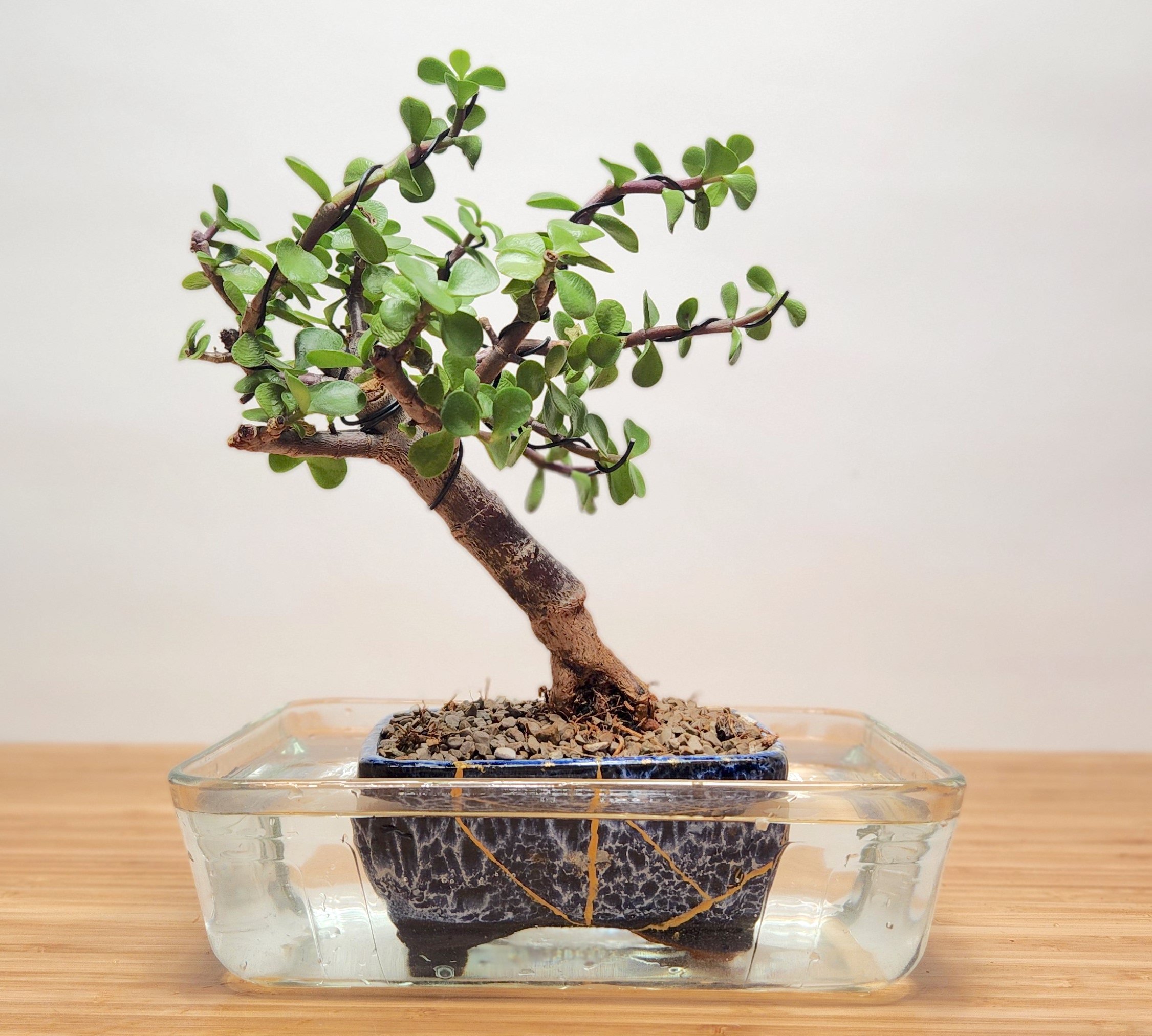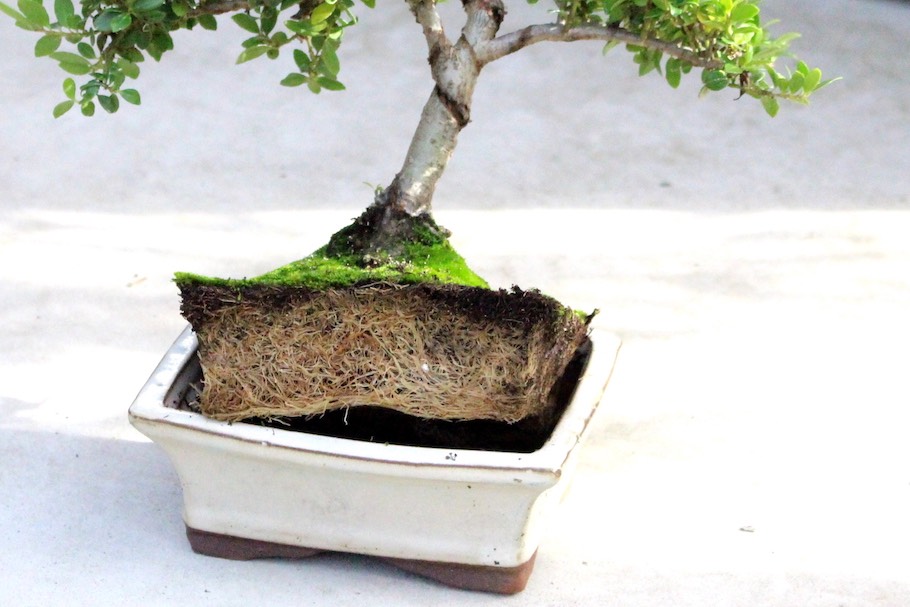Water your bonsai tree every two to three days. Adjust frequency based on the tree’s species and environmental conditions.
Bonsai trees are miniature versions of full-sized trees, requiring specific care. Watering is crucial to maintain their health and beauty. Overwatering or underwatering can harm your bonsai. Check the soil moisture before watering. If the topsoil feels dry, it’s time to water.
Different species have varying needs, so research your specific bonsai type. Environmental factors like temperature and humidity also affect watering frequency. Consistent care ensures a thriving bonsai. Proper watering keeps your bonsai vibrant and healthy. This essential practice helps your miniature tree flourish, showcasing its beauty.
Watering Basics
Watering your bonsai tree correctly is crucial for its health. This section covers the basics of watering. Learn how often to water, and signs your bonsai is thirsty.
Importance Of Watering
Proper watering is vital for your bonsai tree’s growth. Bonsai trees have small pots, so they dry out quickly. Without enough water, they can’t absorb nutrients. This leads to weak and unhealthy trees. Regular watering keeps the soil moist and roots healthy.
Signs Of Thirsty Bonsai
Watch for signs that your bonsai needs water. Here are some common signs:
- Leaves turning yellow or brown
- Soil feels dry to the touch
- Leaves looking wilted or droopy
- Branches becoming brittle
To check soil moisture, use a moisture meter. Stick it into the soil near the roots. If the meter reads dry, it’s time to water your bonsai.
Follow these steps for proper watering:
- Check the soil daily.
- Water when the topsoil is dry.
- Water thoroughly until water drains from the bottom.
Make sure your bonsai tree gets the right amount of water. Too much can cause root rot. Too little can dry it out. Keep a close eye on soil moisture and adjust your watering schedule as needed.

Credit: bonsaibar.com
Factors Affecting Water Needs
Understanding the factors affecting water needs of your bonsai tree is crucial. These factors determine how often you should water your plant. Let’s dive into the key elements.
Tree Species
Different tree species have varying water requirements. Some species like Juniper and Pine need less water. Others, like Maples and Elms, prefer more moisture. Knowing your tree species helps you create a suitable watering schedule.
Soil Type
The soil type in your bonsai pot affects water retention. Well-draining soil prevents water-logging and root rot. Sandy soil drains quickly, requiring more frequent watering. Clay soil holds water longer, reducing the need for frequent watering.
| Soil Type | Water Retention | Watering Frequency |
|---|---|---|
| Sandy | Low | High |
| Loamy | Medium | Moderate |
| Clay | High | Low |
Using the right soil mix helps you manage your bonsai’s water needs efficiently. Always check the soil moisture before watering. This practice ensures your bonsai gets the right amount of water.
Seasonal Considerations
Watering your bonsai tree depends on the season. Different seasons affect how much water your bonsai needs. Understanding these seasonal changes is crucial for keeping your bonsai healthy. This section will cover how to water your bonsai in summer and winter.
Watering In Summer
Summer brings heat and longer days. Your bonsai tree needs more water during this time. The soil dries out faster under the summer sun. Water your bonsai every day in summer. Check the soil before watering. Insert your finger into the soil up to the first knuckle. If the soil feels dry, it’s time to water.
- Water daily during hot days.
- Check soil moisture with your finger.
- Ensure the water drains well.
Early morning or late evening is the best time to water. This prevents the soil from drying out too quickly. Avoid watering during the hottest part of the day.
Watering In Winter
Winter means cooler temperatures and shorter days. Your bonsai tree needs less water in winter. The soil stays moist longer due to less evaporation. Water your bonsai less frequently during winter. Check the soil moisture before watering. If the soil feels damp, wait a few days.
- Water less frequently in winter.
- Check soil moisture regularly.
- Water only when the soil is dry.
Keep your bonsai in a cool, but frost-free place during winter. This helps the tree stay healthy and reduces the need for frequent watering.
| Season | Watering Frequency | Best Time to Water |
|---|---|---|
| Summer | Daily | Early morning or late evening |
| Winter | Less frequent | When soil is dry |
By understanding these seasonal considerations, you can ensure your bonsai tree thrives year-round.
Indoor Vs Outdoor Bonsai
Caring for a bonsai tree involves knowing its specific watering needs. These needs vary greatly depending on whether your bonsai is kept indoors or outdoors. Understanding these differences ensures your bonsai thrives. Let’s explore the watering requirements for both indoor and outdoor bonsai trees.
Indoor Watering Tips
Indoor bonsai trees need special care due to the controlled environment. Here are some tips to help you:
- Check Soil Moisture: Use your finger to check soil moisture. Insert your finger about an inch deep. If it’s dry, it’s time to water.
- Consistent Schedule: Water your indoor bonsai consistently. A good rule is to water every 2-3 days.
- Humidity: Indoor air can be dry. Increase humidity by misting the leaves daily.
- Drainage: Ensure the pot has drainage holes. Excess water should escape to prevent root rot.
Outdoor Watering Tips
Outdoor bonsai trees face different challenges. Here are some tips to keep them healthy:
- Weather Conditions: Water more frequently in hot, dry weather. Less frequent watering is needed during cooler, wet conditions.
- Soil Type: Well-draining soil is crucial. Ensure the soil is moist but not waterlogged.
- Early Morning Watering: Water your bonsai in the early morning. This allows the tree to absorb water before the heat of the day.
- Consistent Check: Check the soil daily. Outdoor conditions can change rapidly.
Watering Techniques
Watering your bonsai tree properly is crucial for its health. Using the right technique can make all the difference. Let’s explore two popular watering methods: top watering and bottom watering.
Top Watering
Top watering involves pouring water directly on the soil surface. This method is straightforward and effective. Follow these steps for optimal results:
- Use a watering can with a fine nozzle.
- Pour water gently to avoid soil disruption.
- Continue until water drains from the bottom holes.
Top watering ensures the soil gets evenly moist. It also helps to wash away any salt build-up.
Bottom Watering
Bottom watering allows the bonsai to absorb water from the base. This technique promotes deep root growth. Here’s how to do it:
- Fill a shallow container with water.
- Place the bonsai pot in the container.
- Let it sit for 10-15 minutes.
- Remove the pot and let it drain.
Bottom watering ensures consistent moisture. It also prevents soil compaction.
| Technique | Benefits |
|---|---|
| Top Watering | Even moisture, washes away salts |
| Bottom Watering | Promotes deep roots, prevents soil compaction |
Common Mistakes
Taking care of a bonsai tree can be challenging. One common mistake is incorrect watering. Both overwatering and underwatering can harm your bonsai tree. Understanding these common mistakes helps you to maintain a healthy tree.
Overwatering
Overwatering is a frequent issue for bonsai enthusiasts. Bonsai trees need water, but too much can cause root rot. This happens when the roots sit in water for too long. Root rot prevents the tree from absorbing nutrients.
To avoid overwatering:
- Check the soil before watering.
- Ensure the pot has drainage holes.
- Use a well-draining soil mix.
Underwatering
Underwatering is another common mistake. Bonsai trees need consistent moisture. Dry soil can damage the roots and stress the tree. Signs of underwatering include brown leaves and a dry trunk.
To avoid underwatering:
- Check the soil daily.
- Water when the topsoil feels dry.
- Use a moisture meter for accuracy.
Tools And Equipment
Proper watering is crucial for your bonsai tree’s health. Using the right tools and equipment helps you water effectively. Let’s explore some essential tools for watering your bonsai tree.
Watering Cans
Watering cans are essential for bonsai care. Choose a can with a fine nozzle. This ensures gentle watering without disturbing the soil. A long spout reaches all parts of the bonsai easily. Plastic and metal cans are common options. Ensure the can is easy to handle and lightweight.
Moisture Meters
Moisture meters help monitor soil moisture levels. Insert the probe into the soil. The meter shows how wet or dry the soil is. This tool helps avoid overwatering or underwatering. Look for a meter with a clear display. Some models even provide digital readouts. Use the meter regularly to keep your bonsai healthy.
Here is a comparison of some popular tools:
| Tool | Material | Best Feature |
|---|---|---|
| Watering Can | Plastic | Lightweight and durable |
| Watering Can | Metal | Long-lasting and sturdy |
| Moisture Meter | Plastic and metal | Accurate moisture readings |
Using the right tools ensures your bonsai tree thrives. Invest in quality equipment for the best results.

Credit: www.bonsaiempire.com
Advanced Tips
Watering a bonsai tree requires precision and care. Here are some advanced tips to help ensure your bonsai thrives.
Using Rainwater
Using rainwater for your bonsai is beneficial. Tap water often contains chemicals like chlorine. These chemicals can harm your bonsai. Rainwater is natural and free from these chemicals.
To collect rainwater, place a clean container outside during rain. Use a mesh cover to keep debris out. Store the water in a dark place to avoid algae growth.
Humidity Trays
Humidity trays help maintain the right humidity level. They are simple to use. Place a tray filled with water under your bonsai pot. Ensure the pot is not touching the water. This setup increases humidity around the plant.
Humidity trays are especially useful in dry climates. They also prevent water from dripping onto furniture. Use pebbles in the tray for better effect.
| Tip | Benefit |
|---|---|
| Use Rainwater | Natural, chemical-free water |
| Humidity Trays | Maintains humidity, prevents furniture damage |
Following these tips can make a big difference in your bonsai’s health. Happy growing!

Credit: m.youtube.com
Conclusion
Watering your bonsai tree correctly is crucial for its health and growth. Monitor soil moisture regularly and adjust according to the season. Understanding your specific bonsai’s needs ensures it thrives. Consistent care will lead to a beautiful, healthy bonsai tree.
Happy gardening!

